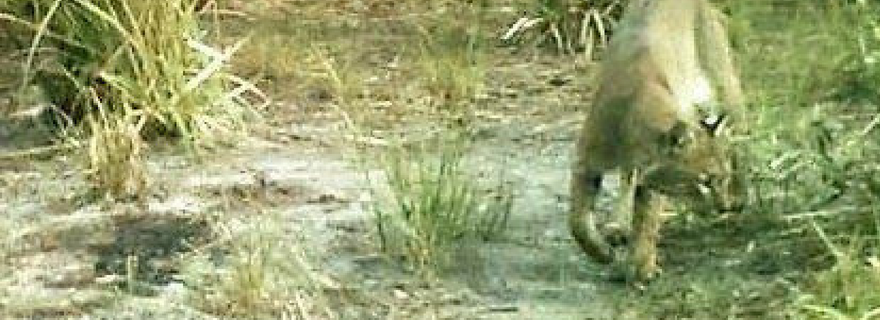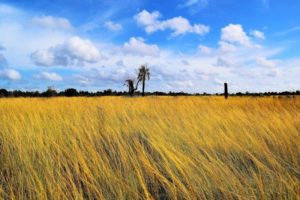 Just about the time Bay Soundings published its first edition – in April 2004 – what was then the region’s largest restoration project was underway at Terra Ceia. Heavy equipment was knocking down acres and acres of Australian pine and Brazilian pepper trees, sculpting new shorelines to replace mosquito ditches, digging new ponds and opening tidal flows.
Just about the time Bay Soundings published its first edition – in April 2004 – what was then the region’s largest restoration project was underway at Terra Ceia. Heavy equipment was knocking down acres and acres of Australian pine and Brazilian pepper trees, sculpting new shorelines to replace mosquito ditches, digging new ponds and opening tidal flows.
The area had been a prosperous farming community until the early 1930s when a massive storm flooded the region. As farmers left, invasive species moved in. And as Florida’s economy continued to grow, the coastal property was destined to become a waterfront condominium community. Finger canals already were dug to open inland areas to a dreamed-of channel through the shallow waters of Bishop’s Harbor and then into Tampa Bay.
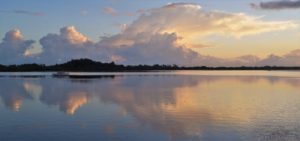 Today, lands dredged for finger canals are mangrove islands covered in native plants and home to multiple species of birds. Towering pine trees planted as tiny saplings dominate sections of the uplands and carefully sited culverts open ponds to tidal flow that creates habitat for fish that depend upon low-salinity ecosystems. Some saltwater ponds have been restored to hold freshwater, polishing stormwater from fast-growing neighborhoods near the preserve before it enters Tampa Bay.
Today, lands dredged for finger canals are mangrove islands covered in native plants and home to multiple species of birds. Towering pine trees planted as tiny saplings dominate sections of the uplands and carefully sited culverts open ponds to tidal flow that creates habitat for fish that depend upon low-salinity ecosystems. Some saltwater ponds have been restored to hold freshwater, polishing stormwater from fast-growing neighborhoods near the preserve before it enters Tampa Bay.
 Bobcats and deer roam the newly restored areas, and whistling ducks with their distinct “wa-hoo” call nest in royal palms and teach their fledgelings how to catch prey in nearby marshes. An enormous stand of Australian pines has been transformed into an open prairie where
Bobcats and deer roam the newly restored areas, and whistling ducks with their distinct “wa-hoo” call nest in royal palms and teach their fledgelings how to catch prey in nearby marshes. An enormous stand of Australian pines has been transformed into an open prairie where 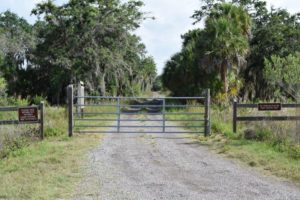 native plants attract even more birds and mammals.
native plants attract even more birds and mammals.
While Terra Ceia is part of the Florida Park Service, it’s not necessarily a destination for the average resident or tourist. “That’s intentional,” says Larry Busby, the park service specialist who works with staff and volunteers on the upland sections of Terra Ceia. “When people see those brown signs directing them to a park, they expect facilities like restrooms, which we don’t have here.”
Instead, what they’ve done is make people-sized openings next to locked gates for maintenance vehicles so people can walk in to hike or kayak the preserve. “It’s really the best of both worlds,” Busby says. “Terra Ceia needs to be a buffer to protect Tampa Bay from the development going on around us, but the people who truly enjoy real Florida can easily get inside to a place where there are no gas-powered vehicles.”
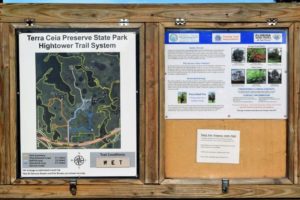 Working with the Florida Trail Association and other volunteers, Terra Ceia now has three marked trails leading through a mosaic of habitats from deep oak forest to wide-open meadows. The park also includes a small boat launch for watercraft with shallow drafts to get to Bishop Harbor. “Expanding the launch has been discussed for years, but it’s still an informal dirt launch, not the big concrete launches you see in other parks,” Busby said.
Working with the Florida Trail Association and other volunteers, Terra Ceia now has three marked trails leading through a mosaic of habitats from deep oak forest to wide-open meadows. The park also includes a small boat launch for watercraft with shallow drafts to get to Bishop Harbor. “Expanding the launch has been discussed for years, but it’s still an informal dirt launch, not the big concrete launches you see in other parks,” Busby said.
And while the sections restored beginning in 2002 are mature, work on two new phases is underway, said Brandt Henningsen, the chief environmental scientist for the Southwest Florida Water Management District’s Surface Water Improvement and Management (SWIM) plan who helped oversee the project. “Some of the older sections are doing so well that they’re using prescribed burns to maintain them,” he notes.
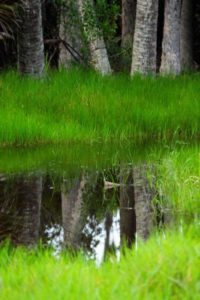 The burns, adds Busby, are a natural occurrence in Florida ecosystems and some plants actually depend upon them to survive. “The fire opens the ground to sunlight and provides fertilizer from the ashes so that some seeds that wouldn’t otherwise be viable can germinate.”
The burns, adds Busby, are a natural occurrence in Florida ecosystems and some plants actually depend upon them to survive. “The fire opens the ground to sunlight and provides fertilizer from the ashes so that some seeds that wouldn’t otherwise be viable can germinate.”
The two new sections – the 287-acre Huber tract and the Frog Creek Borrow Pit area that includes four large ponds excavated to build nearby Interstate 275 plus natural oak hammocks – complement the existing preserve, Henningsen said. “Both the uplands and the ponds are critical habitat in a coastal ecosystem.”
As new sections of the preserve emerge – and older sections need maintenance – the Terra Ceia team depends upon volunteers and interns, Busby said. “We couldn’t do it without them.” Along with marking trails, students from nearby colleges, Tampa Bay Watch, Boy Scouts and AmeriCorps members have helped remove tons of trash, plant thousands of marsh grasses and even build fences and sheds for equipment.
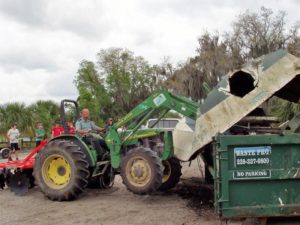 “For staff and volunteers here, it’s been a chance to leave a legacy that will always remain,” Busby said. “You don’t get that opportunity at most parks, where the big decisions have been made and the job is more focused on keeping things moving.”
“For staff and volunteers here, it’s been a chance to leave a legacy that will always remain,” Busby said. “You don’t get that opportunity at most parks, where the big decisions have been made and the job is more focused on keeping things moving.”
For more information, visit the FDEP’s website at https://www.floridastateparks.org/park/Terra-Ceia. Do not use a GPS to find the park entrances, however. Search for Hightower Road to enter the marked trails area, Bishop Harbor boat launch for kayaks and shallow-draft boats, or Hailey House for the park offices, which are open Monday through Friday.
